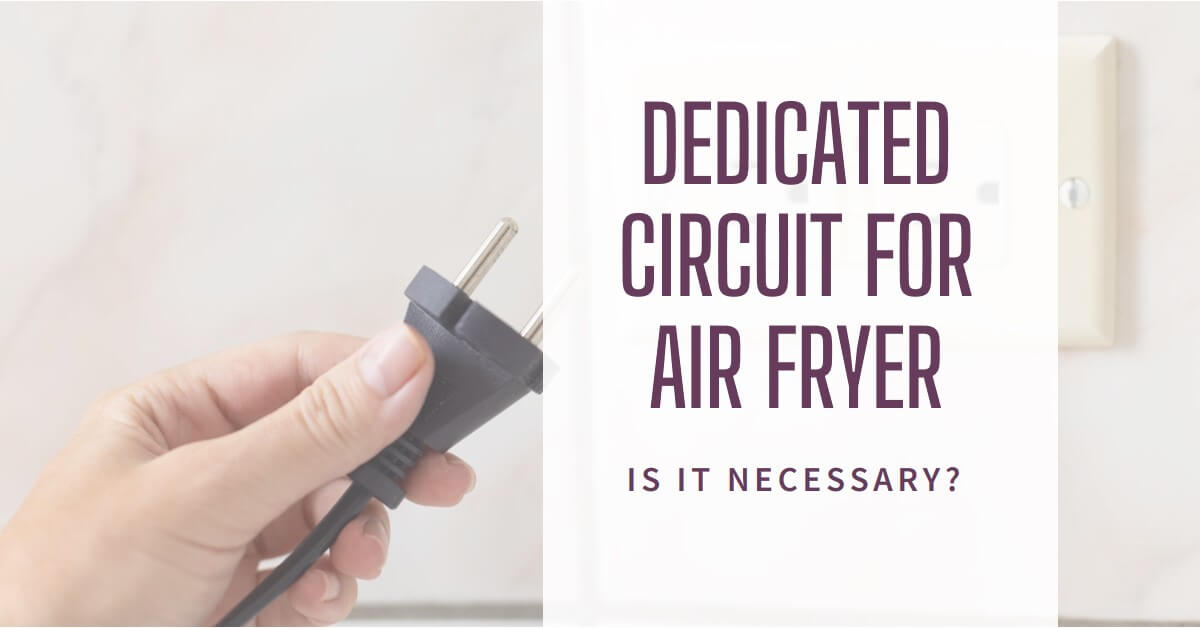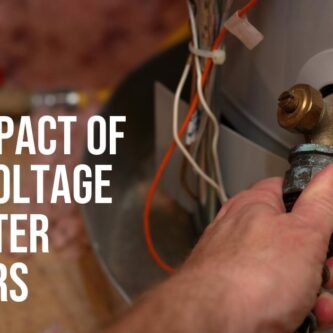Image: “Article Feature Image” by Bing is licensed under CC BY-NC-SA 4.0. Source: Bing Graphic Art. License: CC BY-NC-SA 4.0.
Air fryers have become increasingly popular in recent years as a healthier alternative to traditional deep frying methods.
However, with their growing popularity comes the question of whether they should be on their own circuit.
Yes, an air fryer should be on its own circuit if it has a wattage of 1200 watts or higher. This is required by electrical codes, reduces the risk of overloading the circuit, and improves the appliance’s performance.
In this article, we will explore the electrical requirements of an air fryer and the benefits of having a dedicated circuit for your appliance.
Should an air fryer be on its own circuit?
According to the National Electrical Code, an air fryer that uses more than 50% of a circuit’s capacity should have its own dedicated circuit.
This means that if your air fryer has a wattage of 1200 watts or higher, it should be on its own circuit to reduce the risk of overloading the circuit and to improve its performance.
A dedicated circuit ensures that your air fryer will have enough power and won’t cause other appliances on the same circuit to lose power or malfunction.
Failure to have a dedicated circuit can lead to tripped breakers or blown fuses, and may even cause a fire.
It’s important to follow proper installation steps or hire a professional electrician to ensure safety and compliance with electrical codes.
By having a dedicated circuit for your air fryer, you can ensure optimal performance and safety while cooking your favorite meals. Let’s break this down.
Electrical Circuit Basics
Before diving into the specifics of air fryer electrical requirements, it’s important to understand the basics of an electrical circuit.
In simple terms, an electrical circuit is a path through which electricity flows. It consists of three main components: a power source, a load, and conductors.
The power source provides the energy, the load uses the energy, and the conductors transmit the energy from the power source to the load.
Types of Circuits
There are two main types of circuits: series and parallel. A series circuit is a circuit in which the components are connected in a single, continuous loop.
In a series circuit, the current through each component is the same, and the voltage is divided among the components.
A parallel circuit, on the other hand, is a circuit in which the components are connected in branches.
In a parallel circuit, the voltage across each component is the same, and the current is divided among the components.
Air Fryer Power Requirements
Understanding Wattage
Air fryers are powered by electricity, and the amount of electricity they use is measured in watts.
Wattage is a measure of power, and it represents the rate at which energy is used. The higher the wattage, the more energy the appliance will use.
Most air fryers have a wattage range of 800 to 1500 watts.
Calculating Air Fryer Wattage
To calculate the wattage of your air fryer, you need to know the voltage and amperage of the appliance.
The voltage is the electrical potential difference between two points, and the amperage is the measure of electrical current flowing through a circuit.
The wattage is calculated by multiplying the voltage by the amperage. For example, if your air fryer is rated at 120 volts and 10 amps, the wattage would be 1200 watts (120 volts x 10 amps).
Amp Requirements
The amp requirements of an air fryer depend on its wattage and voltage. To determine the amp requirements of your air fryer, divide the wattage by the voltage.
For example, if your air fryer is rated at 1200 watts and 120 volts, the amp requirements would be 10 amps (1200 watts / 120 volts).
Read also my comprehensive article: Air Fryer Safety 101: Can You Use it in Any Old Outlet?
Air Fryer Circuit Requirements
Single vs. Multiple Circuits
Most homes have a limited amount of electrical power available, and each circuit in the home is designed to handle a certain amount of power.
If too many appliances are plugged into a circuit, it can overload the circuit and trip the circuit breaker.
When it comes to air fryers, it’s important to consider whether they should be on their own circuit or if they can share a circuit with other appliances.
Benefits of a Dedicated Circuit
There are several benefits to having a dedicated circuit for your air fryer. First and foremost, it reduces the risk of overloading the circuit and tripping the circuit breaker.
This can be particularly important if you have other appliances on the same circuit that also have high wattage requirements, such as a microwave or toaster oven.
A dedicated circuit ensures that your air fryer will have enough power and won’t cause other appliances on the same circuit to lose power or malfunction.
In addition, having a dedicated circuit for your air fryer can improve its performance. When an appliance shares a circuit with other appliances, it may not receive enough power to operate at its full capacity. This can result in longer cooking times and less efficient performance.
Electrical Code Requirements
The National Electrical Code (NEC) requires that certain appliances, including air fryers, have their own dedicated circuit.
According to the NEC, any appliance that uses more than 50% of the circuit’s capacity must have its own dedicated circuit.
This means that if your air fryer has a wattage of 1200 watts or higher, it should be on its own circuit.
Read my article: Extension Cords and Air Fryers: A Dangerous Combination?
Installation of an Air Fryer Circuit
Hiring a Professional Electrician
If you decide that a dedicated circuit is necessary for your air fryer, it’s important to hire a professional electrician to install it.
Electrical work can be dangerous, and it’s important to ensure that the circuit is installed correctly to prevent electrical shocks, fires, and other hazards.
DIY Installation Risks
While it may be tempting to save money by installing the circuit yourself, it’s important to understand the risks involved.
Electrical work requires knowledge and experience, and mistakes can be costly and dangerous. If you are not familiar with electrical work, it’s best to leave the installation to a professional.
Proper Installation Steps
If you do decide to install the circuit yourself, it’s important to follow proper installation steps to ensure safety and compliance with electrical codes.
These steps may include wearing proper PPE, turning off power to the circuit, installing a new circuit breaker, running new wiring, and connecting the wiring to the air fryer.
Conclusion
In conclusion, a dedicated circuit for your air fryer is highly recommended if the appliance has a wattage of 1200 watts or higher.
A dedicated circuit reduces the risk of overloading the circuit, improves the appliance’s performance, and is required by electrical codes.
If you decide to install a dedicated circuit yourself, it’s important to follow proper installation steps and understand the risks involved.
However, it’s always best to hire a professional electrician to ensure safety and compliance with electrical codes.
you work With Electricity! Don’t leave empty-handed!
Looking to stay ahead of the game in the world of electrical engineering? Subscribe to my YouTube channel and gain access to exclusive content you won’t find anywhere else!
The staff I recommend (Amazon Affiliate Links to products I believe are high quality):
- Economy 120 Volt/60Hz AC Power Source – Step-Down Voltage & Frequency Converters 1800W
- UNI-T Digital Multimeter Tester UT139C
- 50-Amp Extension Cord for RV “100ft”
- Voltage Stabilizer 110/220v
- Hair Dryer “best selling“
- TOSHIBA EM131A5C-BS Countertop Microwave Ovens
Disclaimer: This contains affiliate links to Amazon products. I may earn a commission for purchases made through these links.





